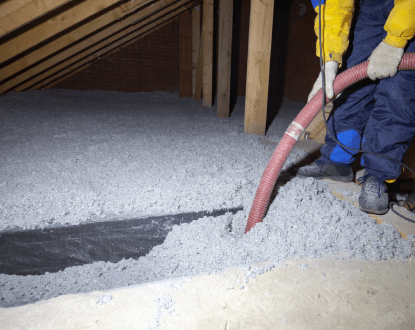Insulation Removals


When existing insulation is wet, moldy, or water-damaged
If insulation is contaminated by pests, rodents, or droppings
To improve indoor air quality by removing dusty or deteriorating insulation
Prior to upgrading to higher-efficiency insulation like spray foam or new batts
When preparing for a renovation, remodel, or new construction upgrade
To eliminate fire-damaged or smoke-contaminated insulation after an incident
Before sealing air leaks or installing a new air/vapor barrier
When insulation has shifted, compacted, or settled over time (common with cellulose and fiberglass)
To comply with insurance, health, or building inspection requirements
To remove old insulation material that no longer meets modern energy codes
Insulation Removal FAQ
Q: Why would insulation need to be removed?
A: Insulation is typically removed when it’s damaged, contaminated, outdated, or no longer performing efficiently due to settling, moisture, mold, pests, or age.
Q: What types of insulation can be removed?
A: We remove all common types, including blown-in fiberglass, cellulose, spray foam, and fiberglass batts.
Q: How do I know if my insulation is bad or needs removal?
A: Warning signs include musty odors, uneven temperatures, high energy bills, pest activity, visible mold, or insulation that looks compacted, wet, or deteriorated.
Q: Is removing insulation messy?
A: Not when done professionally. We use specialized equipment to safely extract insulation while keeping dust and debris contained.
Q: Can new insulation be installed right after removal?
A: Yes. In most cases, once the area is cleaned and any issues (like leaks or pests) are addressed, we can install new insulation immediately.
Q: Is insulation removal safe?
A: Yes, when done by professionals using protective gear and proper equipment. Attempting DIY removal can expose you to allergens, mold, or contaminants.
Q: How long does insulation removal take?
A: Most residential attic or wall removal projects can be completed within a few hours to a day, depending on size and insulation type.
Q: Can I remove insulation myself?
A: It’s not recommended. Improper removal may release hazardous particles and damage your home’s structure or wiring.
Q: Will removing old insulation help improve energy efficiency?
A: Yes. Replacing old, inefficient insulation with upgraded high-performance materials can significantly improve comfort and reduce utility costs.

